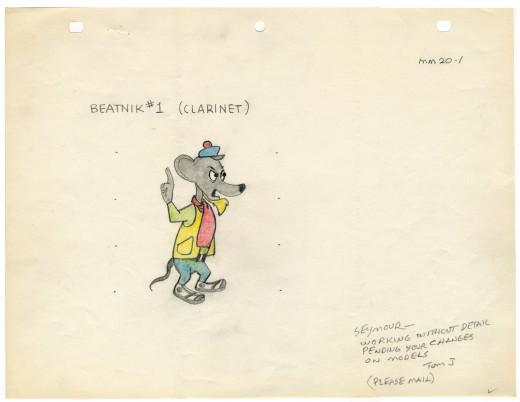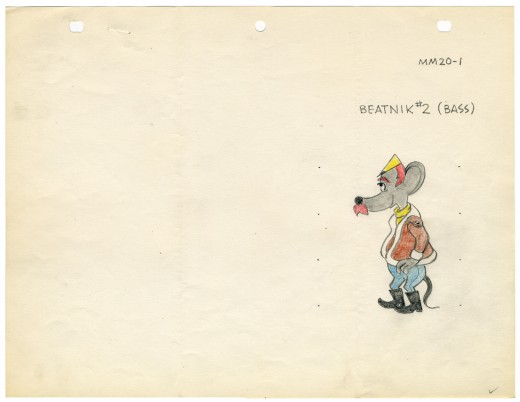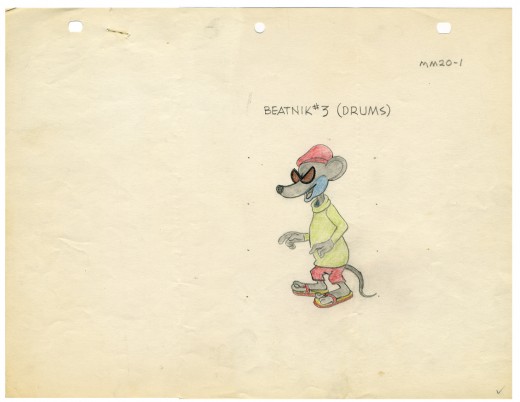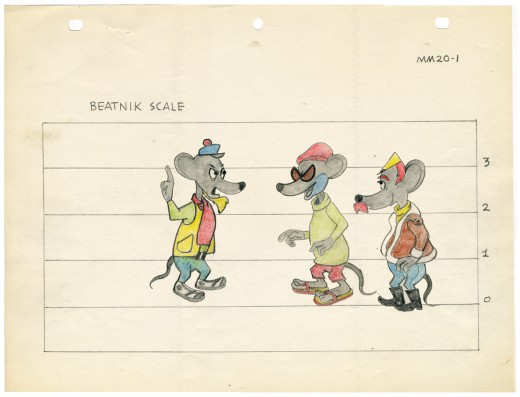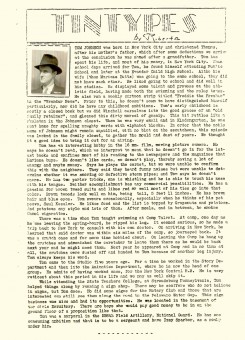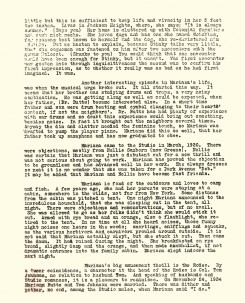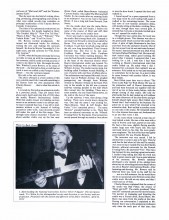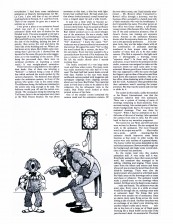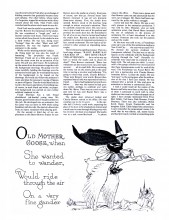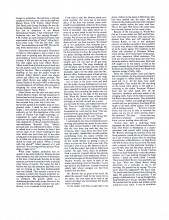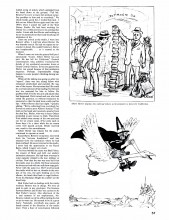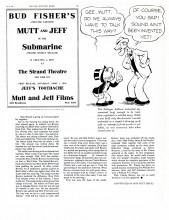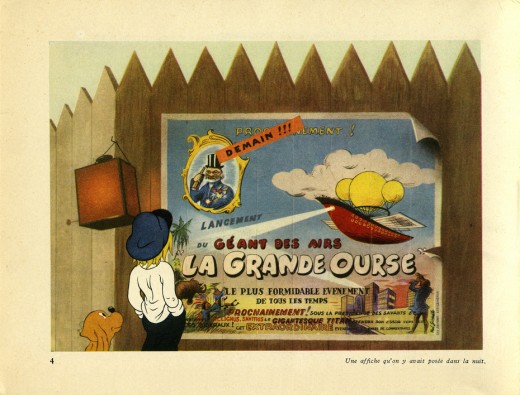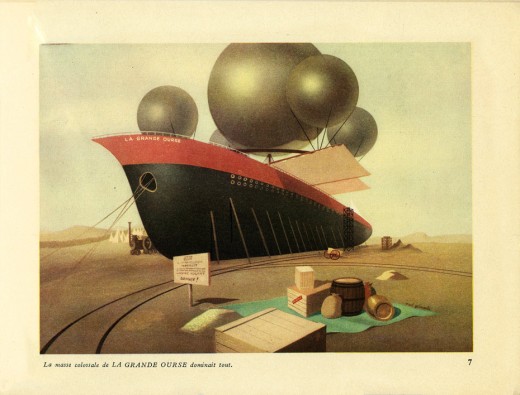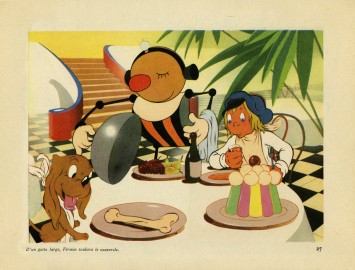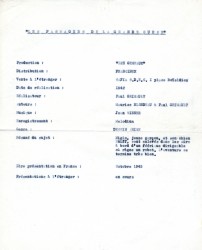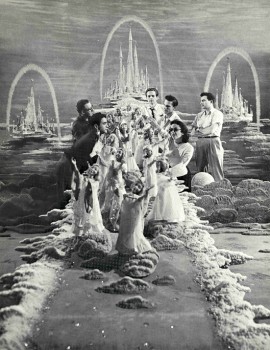Search ResultsFor "1939"
Commentary &Puppet Animation 22 Jan 2008 09:13 am
Lun Bunin’s Beginnings & Oscar Nominees
- Lou Bunin was born in Russia near Kiev. He received his early art training at the Chicago Art Institute and followed up studying with the sculptor Bourdelle in France at the Academie de la Grande Chaumiere. In 1930 he returned to the US with a one man show at Chicago’s Younge Gallery. This was followed by a year in Mexico where he served as an assistant to the painter, Diego Rivera.
He started a marionette theater in Chicago with the author, Meyer Levin. they produced a version of Eugene O’Neill’s The Hairy Ape and Marlowe’s Doctor Faustus.
In 1938 he collaborated with Charles Bowers on his first film with “stringless” puppets. Petroleum Pete and His Cousins (sometimes known as Pete-roleum and His Cousins). This was a 30 min. movie commissioned by the Petroleum Industry for the 1938 World’s Fair and was directed by Joseph Losey. 12 mins. of the film were animated.
During World War II, he was involved in the production of another stop-motion animated film, Bury The Axis. This film is available in dvd from Steve Stanchfield on his Cartoons For Victory. (I highly recommend this disc. A great collection of truly rare WW II films.) I found this film on YouTube and thought I’d share to celebrate this animator’s beginnings.
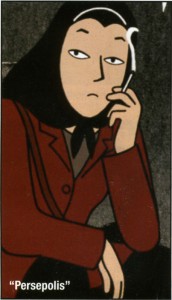
– The Oscar nominees were revealed this morning.
The animated features were excellently chosen:
Persepolis
Ratatouille
Surf’s Up
I think you know which one I’d like to see win. A hint – it’s 2D.
Those nominated for animated short include:
I Met the Walrus
Madame Tutli-Putli
Meme Les Pigeons Vont au Paradis (Even Pigeons Go to Heaven)
My Love(Moya Lyubov)
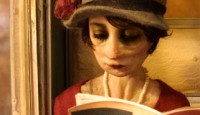 Peter & the Wolf
Peter & the Wolf
I’m quite disappointed that Jeu didn’t make it. Georges Schwizgebel‘s film was brilliant, but the voters didn’t get it, I guess. I’m also a bit surprised the The Pearce Sisters wasn’t nominated. Instead the insipid My Love made it. One could have predicted that, but then I already wrote about this film.
Congratulations to them all, and also to Brad Bird and Jim Capobianco, Jan Pinkava for the nomination for Best Screenplay for Ratatouille. If they win, Jan Pinkava could win after being replaced by Brad Bird.
Animation Artifacts &Fleischer 01 Jan 2008 09:46 am
Popeye New Year
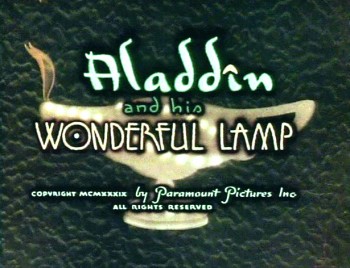 – Happy New Year from the Museum of Modern Art.
– Happy New Year from the Museum of Modern Art.
They’ll be screening the three color Popeye shorts from the Fleischers today, next Wednesday and next Thursday.
Popeye the Sailor Meets Sinbad the Sailor 1936 17 min.
Popeye the Sailor Meets Ali Baba’s Forty Thieves 1937 17 min.
Aladdin and His Wonderful Lamp 1939 22 min.
The program will be screened as follows: Tuesday, January 1, 2:00; Wednesday, January 9, 1:30; Thursday, January 10, 1:30
Here are some frame grabs from the first third of Aladdin and His Wonderful Lamp to help celebrate the occasion. Despite the lack of use of their 3D camera, in this film, I love the backgrounds here. There’s no credit given, but I’m guessing that Bob Little was in charge here. The beautiful art looks similar to what they were doing on Gulliver’s Travels. I think it’s wonderful work.
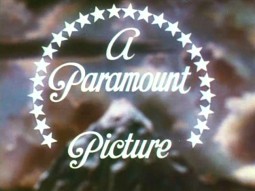 _
_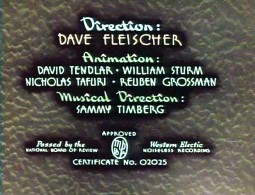
______(Click any image to enlarge.)
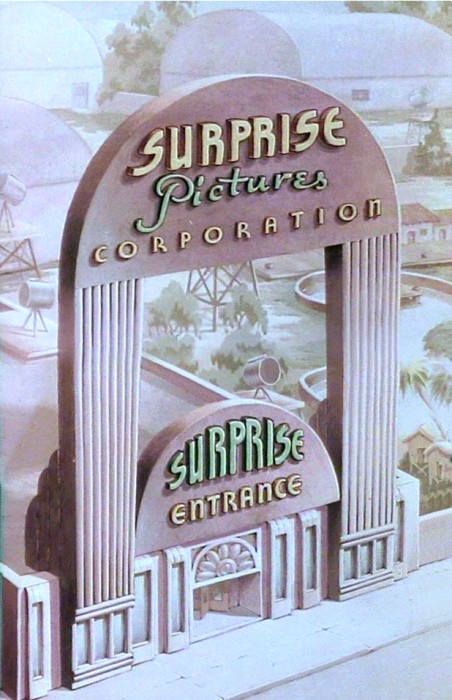
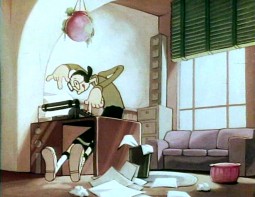 _
_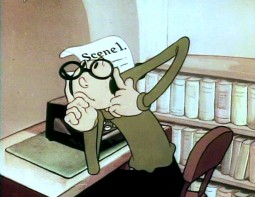
______

_
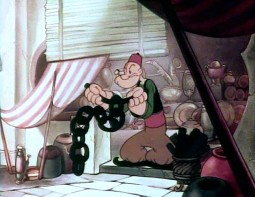 _
_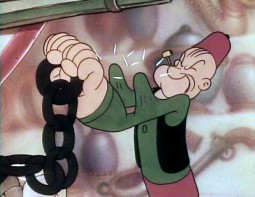
______
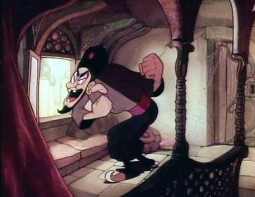 _
_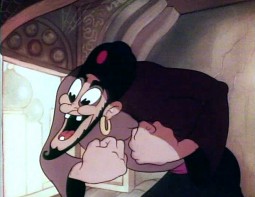
______
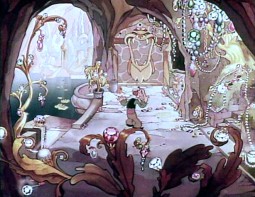 _
_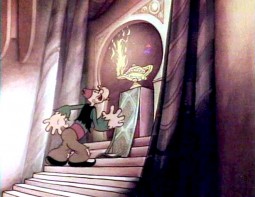
______
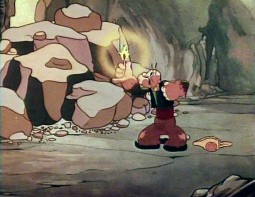 _
_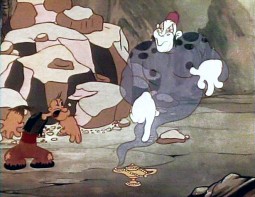
______
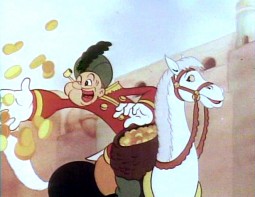 _
_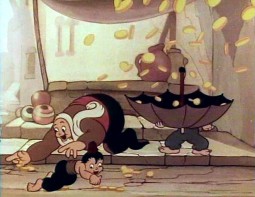
______
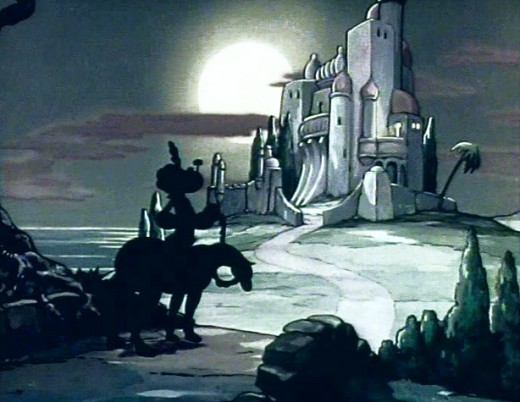
______
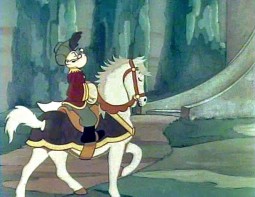 _
_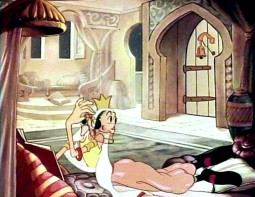
______
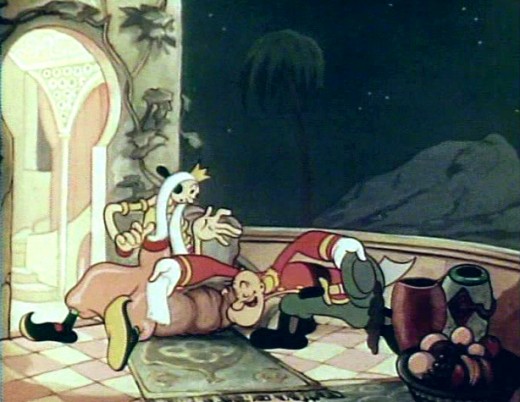
______
______
Daily post 21 Dec 2007 09:29 am
MoMA Shows In Jan.
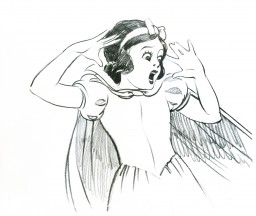 - Today officially marks the anniversary of the premiere of Snow White and the Seven Dwarfs, the first US animated feature. Seventy years later, it’s still one of the finest. There’s an excellent article by Wade Sampson about the premiere. If you have the dvd, why not watch it again?
- Today officially marks the anniversary of the premiere of Snow White and the Seven Dwarfs, the first US animated feature. Seventy years later, it’s still one of the finest. There’s an excellent article by Wade Sampson about the premiere. If you have the dvd, why not watch it again?
Though Snow White isn’t going to play in a theater soon, a number of other features will.
Here’s your chance to see some great and important animated features on a big screen.
____________________________________
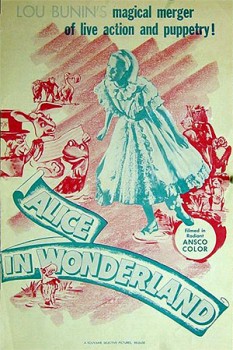 In January, the Museum of Modern Art will present a month of animation from its collection, ranging from early shorts (including three Dave Fleischer Popeye shorts from 1936, ’37 and ’39) to four features including 2005′s Wallace & Gromit in the Curse of the Were-Rabbit.
In January, the Museum of Modern Art will present a month of animation from its collection, ranging from early shorts (including three Dave Fleischer Popeye shorts from 1936, ’37 and ’39) to four features including 2005′s Wallace & Gromit in the Curse of the Were-Rabbit.
The Popeye films and a 1948 Bunin/Bower Alice in Wonderland will both be projected on prints recently restored by the Museum. You can bet I’ll have a lot more to say about Alice as time gets closer.
Still Moving
The Museum continues its regular series derived exclusively from its film collections, featuring works that have been acquired and preserved by MoMA over the last seven decades.
Still Moving features animation, from traditional cel animation to puppets, clay, and CGI. Included are three Technicolor Popeye shorts from the Fleischer studio, recently restored by the Museum, as well as My Neighbors the Yamadas, a disarming chronicle of contemporary daily life by Japanese animation master Isao Takahata. MoMA’s restoration of Alice
in Wonderland, Lou Bunin and Dallas Bower’s deft melding of live actors and puppets, will be screened, as will the feature debut of Wallace and Gromit, and Pixar’s a bug’s life.
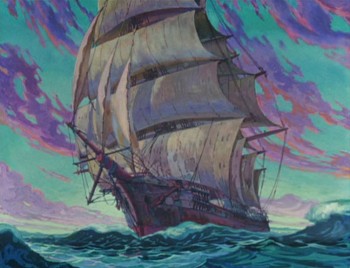 Popeye the Sailor Meets Sinbad the Sailor. 1936. USA. Directed by Dave Fleischer. 17 min.
Popeye the Sailor Meets Sinbad the Sailor. 1936. USA. Directed by Dave Fleischer. 17 min.
Popeye the Sailor Meets Ali Baba’s Forty Thieves. 1937. USA. Directed by Dave Fleischer. 17 min.
Aladdin and His Wonderful Lamp. 1939. USA. Directed by Dave Fleischer. 22 min. Program 56 min. ________________
Tuesday, January 1, 2:00
(T2); Wednesday, January 9, 1:30 (T3); Thursday, January 10, 1:30 (T3)
(The image above thanks to Animation Backgrounds.)_
Alice in Wonderland. 1948. Great Britain/France. Directed by Lou Bunin, Dallas Bower. Screenplay by Henry Myers, Albert Lewin, Edward Eliscu.With Carol Marsh, Stephen Murray, Pamela Brown. 96 min.
Wednesday, January 2, 6:00 (T2); Friday, January 11, 1:30 (T3); Thursday, January 17, 1:30 (T3)
Wallace & Gromit in The Curse of the Were-Rabbit. 2005. Great Britain. Directed by Steve Box, Nick Park. Screenplay by Box, Park, Bob Baker, Mark Burton. Acquired from Dreamworks Animation. 84 min.
Thursday, January 3, 6:00 (T2); Wednesday, January 16, 1:30 (T3); Friday, January 18, 1:30 (T3)
A Bug’s Life. 1998. USA. Directed by John Lasseter, Andrew Stanton. Screenplay by Stanton, Don McEnery, Bob Shaw. 94 min.
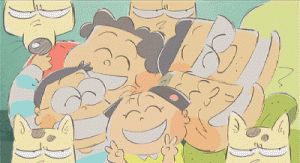 Friday, January 4, 6:00 (T2); Wednesday, January 23, 1:30 (T3); Thursday, January 24, 1:30 (T3)
Friday, January 4, 6:00 (T2); Wednesday, January 23, 1:30 (T3); Thursday, January 24, 1:30 (T3)
Hohokekyo tonari no Yamada-kun (My Neighbors the Yamadas). 1999. Japan. Written and directed by Isao Takahata. In Japanese; English subtitles. 104 min.
Wednesday, January 30, 1:30 (T3); Thursday, January 31, 1:30 (T3)
(Image above thanks to Conversations With Ghibli _
Animation Artifacts &Models 24 Aug 2007 08:26 am
Miceniks
- Here are some basic character models by Tom Johnson for Miceniks (1960), a Harvey “Modern Madcap” cartoon. It was directed by Seymour Kneitel and animated by Johnson and Bill Henning.
These drawings were folded in three and were probably mailed by Johnson from his home. He does ask Kneitel to mail the changes back to him. Obviously, the days of the free lance animator had started by 1959.
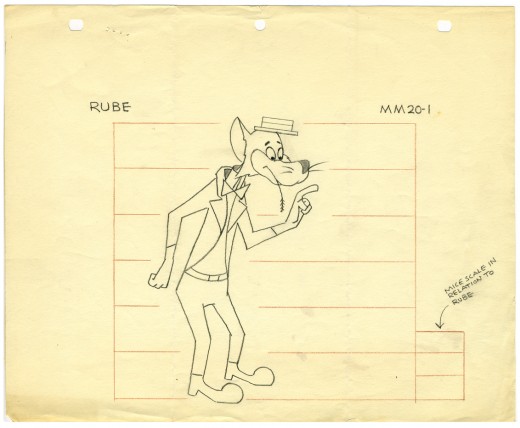
(Click on any image you’d like to enlarge.)
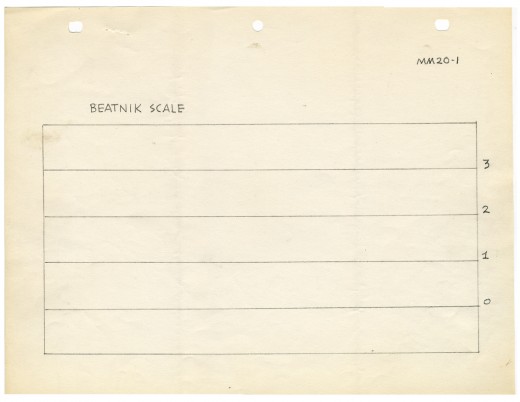
This scale chart overlaps the models “Beatnik 1,2 & 3″ for size comparison. The end result would look something like this:
In Feb 2006 I posted a 1939 bio of Tom Johnson from the Fleischer Animated News. This gives an indication of his importance to that studio. Since I’m posting some of his artwork, I thought it’d be appropriate to rerun this piece about the artist.
Books &Comic Art 11 Apr 2007 07:44 am
Even More Pigs
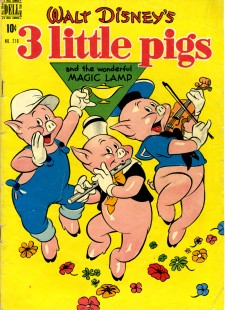 – I used to love comic books when I was a kid. I read them incessantly. It grew to become an enormous thing between me an my father when he absolutely banned them in the house. Comic books back in the 50s, everyone knew, rotted out the minds of little children. I couldn’t resist and continued to sneak them into my room. I couldn’t get enough of Donald Duck or Unca Scrooge or, even, Little Lulu.
– I used to love comic books when I was a kid. I read them incessantly. It grew to become an enormous thing between me an my father when he absolutely banned them in the house. Comic books back in the 50s, everyone knew, rotted out the minds of little children. I couldn’t resist and continued to sneak them into my room. I couldn’t get enough of Donald Duck or Unca Scrooge or, even, Little Lulu.
One of my earliest memories comes from myself at the age of 8 trying to imagine what this genius, Walt Disney, looked like. This is before the Disneyland television show, before the media and PR hounds poured into the mind of an 8 year old child. I mean Walt Disney signed those comics – his script name appeared just above the Donald Duck masthead on the cover – he was the one responsible.
(Click any image to enlarge.)
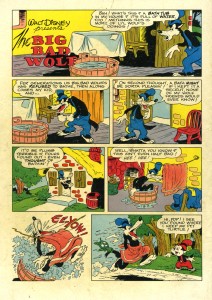 Well, I’ll tell you what I imagined:
Well, I’ll tell you what I imagined:
An oddball version of Farmer Alfalfa (that must be what Disney looked like) stood at a large, Rube Goldberg-like machine, right out of the Industrial Revolution, and he turned out these books on a conveyor belt. That’s all I remember about it, but I do remember it. Obviously, my father was right. My mind was rotting away.
I was finally caught. It was a large, Special issue comic book. “Dennis The Menace Goes To Hawaii.” That was it, and I was punished. Two weeks to bed early without television didn’t stop me, and somehow it seemed alright a few weeks later to read comics again. My comic book craving continued. I didn’t collect them; I just read them and appreciated the drawing. (They were well drawn back then.)
The back cover
So now, every once in a while, I come upon a rarity
on ebay and can’t help myself. A few months ago I found
this Three Little Pigs comic book and had to have it. I didn’t even know there were Three Little Pigs comics! It was published in 1949.
I’m amazed at how successful The Pigs were. The short was released in 1933. Before television how did the legacy live on long enough to keep them popular?
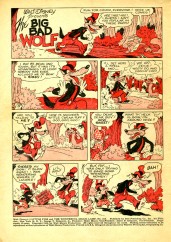
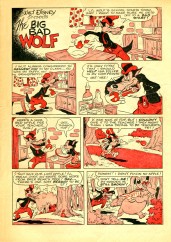 There were only a couple of other shorts with the same characters:
There were only a couple of other shorts with the same characters:
The Big Bad Wolf 1934,
The Three Little Wolves 1936, and
The Practical Pig 1939.
The last, prior to 1949, was a WWII educational short, The Thrifty Pig in 1941.
Eight years later this comic book appeared.
55 years later, I bought a copy. Still rotting my brain.
There were no ads in the magazine back then. These are the
inside covers, front and back.
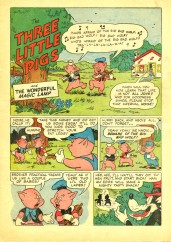 1
1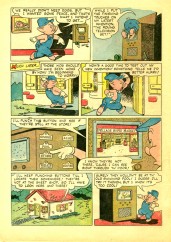 2
2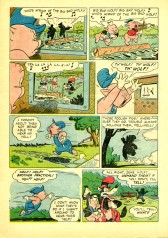 3
3
The comic book incorporates other characters from the Disney fold. The witch from Snow White appears when it’s convenient, and Br’er Bear appears.
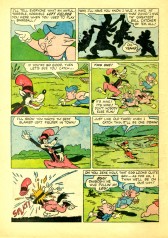 4
4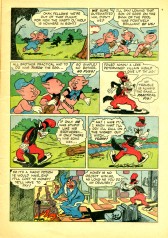 5
5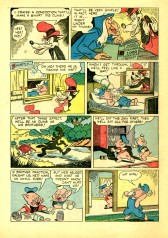 6
6
The above are the first six pages of the story. It’s the first of three stories in the 32 page comic book.
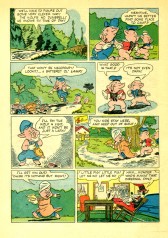 14
14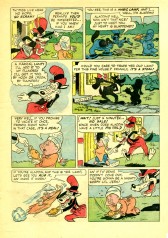 15
15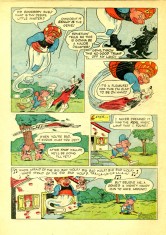
These are the last three pages of the story. I just wanted to give a taste of the comic.
Articles on Animation 12 Mar 2007 08:25 am
I.Klein’s Charles Bowers 1
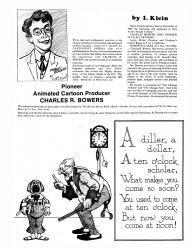 – Charles Bowers was an animation pioneer and entrepeneur. He is often mentioned in animation histories but is given short mention in the same publications. The brilliant book, Before Mickey by Donald Crafton, often mentions Bowers by name and company (Celebrated Film Corporation), but it doesn’t really go into what he did.
– Charles Bowers was an animation pioneer and entrepeneur. He is often mentioned in animation histories but is given short mention in the same publications. The brilliant book, Before Mickey by Donald Crafton, often mentions Bowers by name and company (Celebrated Film Corporation), but it doesn’t really go into what he did.
In fact, he supervised the Mutt and Jeff series for Pathe-Freres and Bud Fisher and was instrumental in trying to get The Katenjammer Kids animated (until law suits from Hearst developed). He invented a new camera for live action and became a moderately successful silent-screen comedian. He also did a couple of puppet animated shorts in 1939 & 1940 which were released by the Fleischers.
(Click on any image to enlarge.)
Additioinally, he was an animator for Loucks & Norling on a World’s Fair film about petroleum done in 3-D (stereo vision), a story writer for Walter Lantz, a published cartoonist, a children’s book author/illustrator, a high-wire walker and at one time a bronco buster. Perhaps his problem was that his energies were too spread out trying to do many different things. Had he been more focussed on a single métier, he might have had more success. (Just a guess.) His is in some ways a typical animation biography.
In March and June of 1975, Cartoonist Profiles published a two-part article by animator, Izzy Klein. Klein witnessed Bowers’ work and writes about it in a very affable style.
Cartoonist Profiles magazine stopped publishing in 2005 when editor Jud Hurd died. I’ve decided to post the two parts of this article: Part 1 here, today. Part 2 later this week.
Animation Artifacts 10 Sep 2006 09:03 am
La Grande Ourse
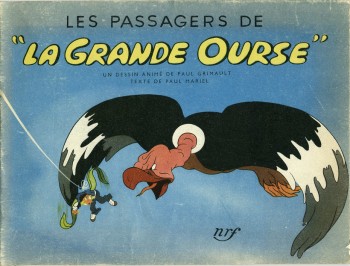 – In 1942 Paul Grimault released an animated film entitled Les Passagers De “La Grande Ourse.” The film had actually been completed in 1939 and titled Gô in the Birds, but because of the outbreak of WWII the film suffered setbacks and was released in 1942 with the new title.
– In 1942 Paul Grimault released an animated film entitled Les Passagers De “La Grande Ourse.” The film had actually been completed in 1939 and titled Gô in the Birds, but because of the outbreak of WWII the film suffered setbacks and was released in 1942 with the new title.
Several years ago, John Canemaker gave me a gem of an attractive little book that was illustrated with images from the film. Grimault was the father of French animation, and I’d always assumed that this film was a feature. In fact, it was a nine min. short, but it was important historically because it was the first big French animated production trying to out-Disney Disney.
The story is very unlike American films. There’s a fanciful sense of imagination that is true of many French cartoons. In summation the story is:
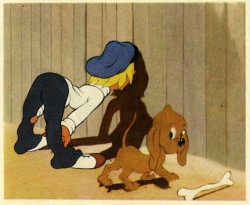 A little boy and his dog sneak into a shipyard and are grabbed by a crane which places them on a ship in dock, loading. This ship, “The Grand Ourse,†is an oddity in that it is fitted like a zeppelin with balloons to lift it into the air.
A little boy and his dog sneak into a shipyard and are grabbed by a crane which places them on a ship in dock, loading. This ship, “The Grand Ourse,†is an oddity in that it is fitted like a zeppelin with balloons to lift it into the air.
Boy and dog arrive in their compartment, accidentally, as the vessel starts to take-off into the sky. Adventures ensue with the boy and dog confronted by a restive eagle and a deaf and dumb robot
Here are some of the pages of the book:
A carbon copy of the credits for the film was enclosed within the book when I received it.
It was copied onto one of those pieces of paper that could only be European, sort of a tissue that seemed delicate.
That’s attached to the left.
(Like all images on the page, just click any of them to enlarge to a legible size.)
Animation Artifacts 03 Sep 2006 08:29 am
More Skeletal Systems
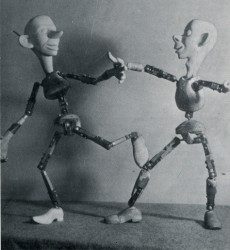 – Yesterday, I posted a couple of links to images of imagined animation skeletons. I completed with the build-it-yourself armatures of Monterey Motion Puppets.
– Yesterday, I posted a couple of links to images of imagined animation skeletons. I completed with the build-it-yourself armatures of Monterey Motion Puppets.
I feel as though this is a subject that deserves a bit more attention. Armatures.
There’s quite a bit of information on line, and I want to call attention to a couple of links.
At Stop-Motion Express, more armature building instructions as well as a lot of advice on puppet animation is available. You can also buy one through their store.
If you’re not handy and cannot build an armature yourself, you can buy one on ebay express. The Armaverse Armature sells for $149 – preconstructed and ready to be altered to your character’s needs. Or another smaller one for $139.
 There are a number of articles about Aardman and their armatures. One from the BBC features a couple of small pictures.
There are a number of articles about Aardman and their armatures. One from the BBC features a couple of small pictures.
Vince Backeberg has a site that features methods of armatures for all “Claymation” puppets. (I’m not sure he realizes that “claymation” was a copytighted term for Will Vinton’s animation process.)
AnimateClay is a webpage devoted to – guess. It features methods and devices needed.
Getting Started in Animation is a great Q&A article with 3Bears Animation a site where all the ins and outs of puppet animation are discussed, including armatures.
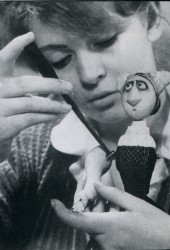 This article is part of exposure.co.uk, a site for advice on low budget film making.
This article is part of exposure.co.uk, a site for advice on low budget film making.
Not to completely ignore the skeletons of cgi, Blender3d.org has posted a detailed article on How Armatures Work. Obviously, they’re talking about cgi armatures.
Two of the images posted here are from magazines. The top image comes from an article on Lou Bunin and shows a 1939 armature he had built when he was just starting out. The image to the right is part of a French magazine-sized publication from Folimage about Jiri Trnka. Pictured here is one of about five clustered together which can be viewed in total by clicking that image. The middle image is of Wallace as armature without his head.
Animation Artifacts &Puppet Animation 06 Jun 2006 07:07 am
Hansel & Gretel
- Hansel and Gretel was an animated feature produced in 1954 by Michael Myerberg a showman of a producer who made elaborate claims for his sets and puppets and pushed the publicity to feature many innovations that didn’t exist. 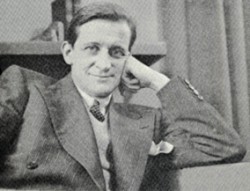
I can remember CBS covering the film’s premiere. They had the upper half of the puppet of Rosina Rubylips in a glass box – it looked not unlike the gypsy fortuneteller in the movie BIG. Supposedly the puppets were controlled by electronics. Singer Anna Russell, at the premiere, was prompted to turn dials, and the puppet moved in a robotic movement. The film employed animation. There were no electronics operating the puppets; there were wires.
(producer Michael Myerberg)
As a child, I was intrigued with this puppet feature – a rarity in those days – and searched for any information about the production. A magazine I have, Closeup #2 (1976) offered a lot of photos of this film, and I thought I’d post some of them.
The feature was done out of a brownstone on East 2nd Street in Greenwich Village, and 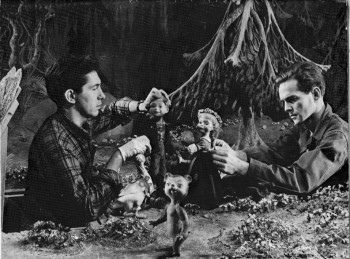 non-animators were hired to animate the puppets. Some of them were master puppeteers (e.g. Don Sahlin had already designed and built all the marionettes on Howdy Doody, Kermit Love went on to do some masterful work with Jim Hensen.) The camerman was the extra- ordinary still-photographer, Martin Munkasci.
non-animators were hired to animate the puppets. Some of them were master puppeteers (e.g. Don Sahlin had already designed and built all the marionettes on Howdy Doody, Kermit Love went on to do some masterful work with Jim Hensen.) The camerman was the extra- ordinary still-photographer, Martin Munkasci.
Of course, all of these people had to learn how to do animation on-the-job.
Don Sahlin and Joe Horstman animating Hansel & Gretel in the woods.
This photo gives a good indication of the scale of the production.
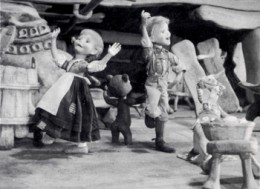
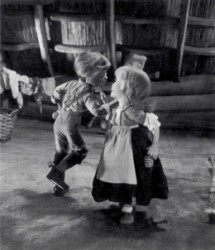
Hansel and Gretel dance inside their cottage waiting for their parents to return.
Aside from it being a first feature for Myerberg, it was also the first time opera was the basis for an animated film. All of the dialogue is sung in an English translation of the Humperdink opera. They utilized some great opera stars such as Anna Russell for the voices. That, in itself, gives the animated feature a peculiar feel.
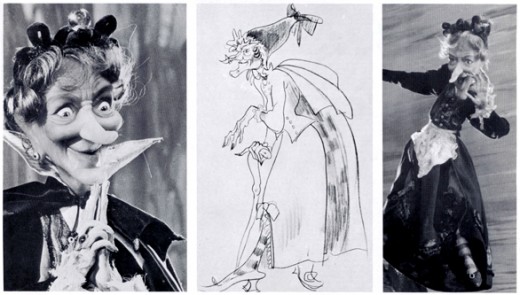
The puppet & production sketch of the evil witch, Rosina Rubylips. The character is voiced by opera star, Anna Russell.
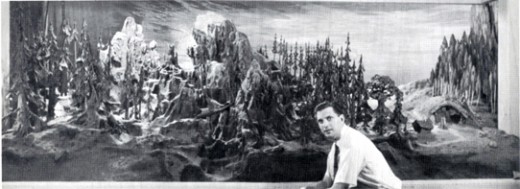
Scenic Designer, Evalds Dajevskis in front of one of his many sets.
Animating the descent of the angels from their fairy kingdom. Pictured are (counterclockwise): Danny Diamond, Kermit Love, Joe Horstman, Sky Highchief, Teddy Shepard and, outside of the circle (with arms crossed) Roger Caras.
It looks to be a relatively large group of animators gathered in and around the very detailed, gingerbread set.
You can see how large the sets and puppets are in this photograph. The animators used electromagnets in the feet of the puppets to keep them anchored to the table. By turning off the switches they were able to move the puppets from the spot where they stood.
The elaborate puppets were created by Jim Summers. He designed armatures for the puppets which had a number of little switches. By pressing on the switch for the leg, for example, you would release the leg and could then move it. By releasing the pressure on the switch, the leg would lock in position.
The director of the film, John Paul, was a British actor directing his first and last animated film.
Pixar 26 May 2006 07:38 am
Bombay Party
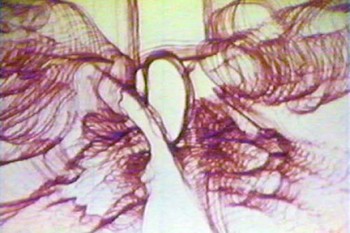 - Last night, the Museum of Modern Art opened their film celebration of the work of CalArts Film Makers.
- Last night, the Museum of Modern Art opened their film celebration of the work of CalArts Film Makers.
The opening program included work by animators: Stephen Hillenburg, Adam Beckett, JJ Villard, and Naomi Uman. There were also a number of live action shorts by: Cy Kuckenbaker, Dane Davis, Danielle Ye, and Hyun Kyung Kim.
(Flesh Flows by Adam Beckett)
It was an unsettling program which I thought might have featured more animation – given the animation department brought most of the acclaim to the school. However, I suspect this was designed to be more of a tease of what other programs might feature.
Afterward, there was a party at the nearby restaurant, Bombay Palace. There we met with MOMA curator, Josh Siegel, Maureen Selwood completely in her element (it’s been quite a long time since we last met) and a number of other animation folk: John Canemaker, Jeff Sher, Nancy Beiman, Doug Vitarelli, Bill Plympton, Matthew Clinton, and Kathy Rose.
- There’s a good interview with Mo Willems on DRAWN. He talks about his last book, Knufflebunny, which was a Caledecott honor mention, and his newest book (and which we animated for Between The Lions), You Can Never Find a Rickshaw When It Monsoons.
- Hans Perk on his new A Film blog, has posted an intriguing series of lecture notes on “The Relation of Music to Animation” by Albert Hay Malotte a composer at Disney’s from 1934 – 1939. This document combines my two loves: animation and film music. (I love the analysis of the music of Scott Bradley‘s music in Film Music, A Neglected Art by Roy M. Prendergast.)
By the way, the film drafts for the brilliant Mickey film, The Pointer, are also available on that site.
- A Scanner Darkly opened at the Cannes Film Festival to not the most positive of reviews. Here’s the Variety review which compares it not favorably to Waking Life. Richard Linklater turns out to be the first director ever to have two films at Cannes at the same time. His Fast Food Nation is also playing there. He’ll always be on my “A” list for the brilliant, Before Sunset.
